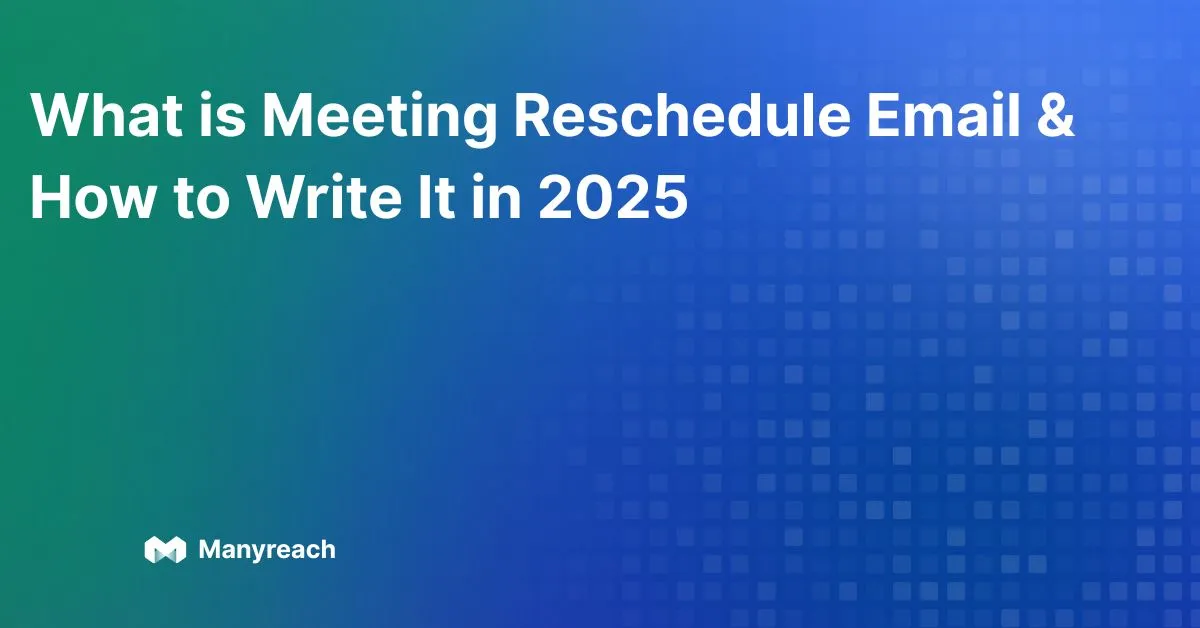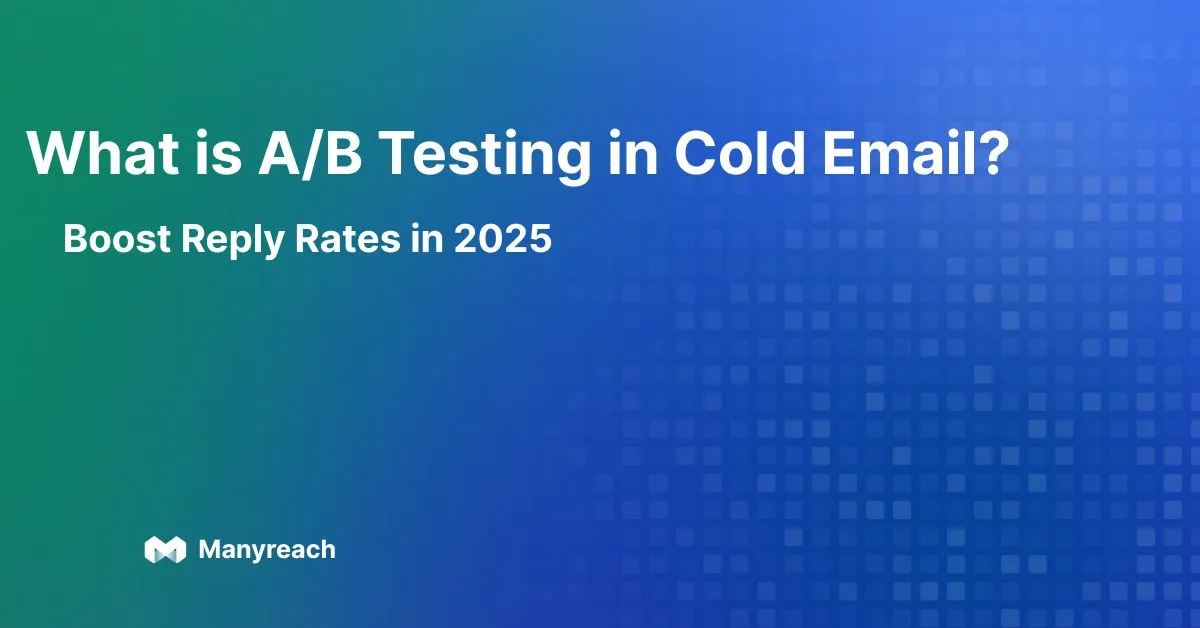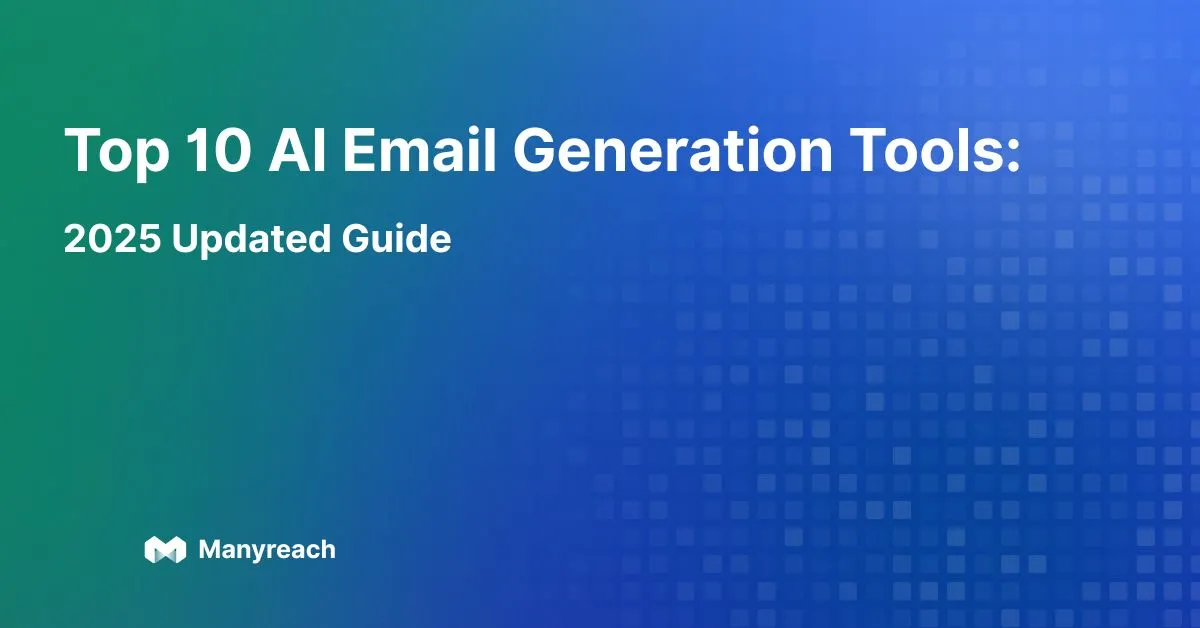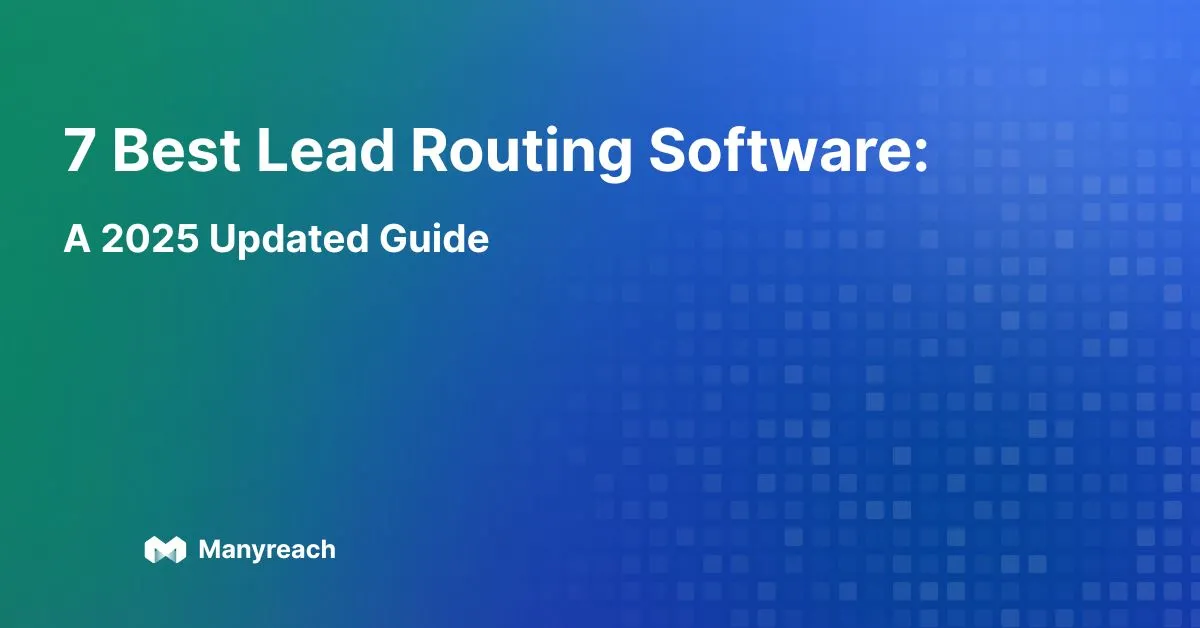How to Personalize Cold Emails in 2025

To make your cold email look authentic and not over-the-top, focus on personalization throughout the email, and not while writing subject lines.
In fact, personalized subject lines are the first step, written to draw attention.
Once you have their attention, mention the recipient’s name, reference their company, and a pain point that matters to them in the body.
These thoughtful touches will show you’ve done research and genuinely care about helping them. So it will make your outreach feel authentic and boost your chances of getting a response.
Learning how to personalize cold emails is key to turning a simple outreach into a conversation that resonates.


Why Does Cold Email Personalization Matter?
Picture your own inbox for a moment. Chances are, you’ve ignored hundreds, if not thousands of templated, copy-paste emails.
Yet, some emails still managed to pull you in. Why? Because they had something familiar, your name, your role, or a direct acknowledgement of a problem you’re facing.
That’s the effect of personalization. It doesn’t just get your email opened; it also earns the right to a reply.
Here’s why personalization is the backbone of an effective cold outreach:
- Relevance wins over templates – Prospects won’t respond to generic scripts, but they will engage with emails that resonate with their world.
- Instant trust-building – Showing that you’ve researched them sets you apart from spammy senders and positions you as credible.
- Momentum in conversations – Personalization isn’t limited to adding “Hi {{First Name}}.” It’s about demonstrating you understand their challenges, which makes your solution more compelling.
- Your competitive edge – Most outreach campaigns stop at surface-level personalization. Going one level deeper instantly places you among the top emails that earn replies.
In short: personalization transforms your cold email from a random interruption into a relevant conversation starter.
And that leads to getting replies from a recipient, who receives thousands of emails everyday.
How to Personalize Cold Email? 3-Tier Framework
Adding someone’s name is the bare minimum, and it doesn’t cut it anymore. To truly stand out, you need a structured approach.
Here’s a 3-tier personalization framework that adapts to your Ideal Customer Profile or ICP and maximizes your chances of success.
Tier 1: Foundational Personalization
This is where you begin your journey. It involves weaving in simple but important details such as your prospect’s name, company, or job role.
Perfect for large campaigns, this method still makes your emails feel like it’s written for specific audiences, rather than spamming random inboxes.
Example:
“Hi James, I noticed you’re working at XYZ Corporation.”
This simple acknowledgment already signals that you’ve done your homework and aren’t blasting generic emails.
Tier 2: Role-Specific Personalization
Now we move beyond the basics. At this stage, you tie your email to the recipient’s role or recent company events.
So rather than stopping at “name + company,” you can connect your email to something meaningful. You can write about a funding round, expansion, or a product launch.
Example:
“Congrats, James! I saw XYZ just announced a Series B. With rapid growth, lead generation often becomes a bottleneck, something we can help streamline.”
This type of personalization works well for mid-tier prospects, where a little extra effort significantly improves response rates.
Tier 3: Deep Personalization
Reserved for high-ticket opportunities, this approach requires genuine research and a laser-focused message.
Although time-intensive, it makes the recipient feel like you wrote the email exclusively for them, dramatically boosting response odds.
Example:
“Hi James, I listened to your recent podcast on scaling SaaS teams. You mentioned hiring challenges during rapid growth. We’ve helped companies like yours overcome the same hurdle; so I would love to share how.”
This tier is ideal for enterprise clients or strategic accounts where personalization can become the difference between a future opportunity and a lost deal.
Personalization Plans That Work Best
Cold email personalization doesn’t end at dropping someone’s name. It extends to how you frame subject lines, write your intros, and close with CTAs.
Let’s break these down.
1. How to Personalize Subject Lines
Your subject line is the first thing prospects notice, and you only have 2–5 seconds to grab their attention.
So the best practices are:
- Keep it short; no more than 6–7 words.
- Make it context-driven and intriguing.
- Avoid clickbait, and stay authentic.
Examples:
- “Congrats on XYZ’s Series B — Quick Thought!”
- “James, your recent post caught my eye”
- “Quick idea for {{CompanyName}} growth”
2. How to Craft Intro Lines to Hook Prospects
If the subject line earns you an open, the intro must maintain momentum. So keep intros within 20 words and make them highly specific to your recipient.
Show that you know something real about them, their company, or their industry.
Examples:
- “Congrats on XYZ’s funding! Fast growth often creates ops challenges; curious how you’re handling it.”
- “I noticed you recently shared insights on LinkedIn about scaling sales teams; loved your perspective.”
3. How to Write Relevant CTAs
A compelling call-to-action ensures your email doesn’t fall flat at the end.
The key? Keep it low-pressure and value-driven. Always avoid jumping straight to “book a 30-min call.”
Examples:
- “Would you like me to share a short case study relevant to your team?”
- “Open to a quick chat on how we’ve helped similar SaaS companies?”
- “Can I send you a brief demo tailored to {{CompanyName}}?”
By aligning the subject lines, intros, and CTAs together with the prospect’s reality, you can transform cold outreach into a natural conversation starter.
How to Personalize Your Cold Emails
Personalizing at scale isn’t practical if you’re doing everything manually.
That’s where automation tools like Manyreach bridge the gap, helping you to add personal touches while maintaining efficiency.
Here’s how you can streamline the process:
1. Build a Segmented Lead List
Personalization is only as strong as your targeting. Upload a structured list into Manyreach or build one using advanced filters like role, industry, company size, or geography.
The more precise your segmentation, the easier it is to sound relevant.
2. Blend Merge Tags, Variables, and AI in Your Outreach
Move beyond {{FirstName}}, and use merge tags, spintax, and role-based variables to add layers of authenticity.
With Manyreach, you can generate multiple versions of the same email, making sure your outreach feels natural without endless manual edits.
3. Design Role-Specific Email Sequences
Not every prospect will respond to the same email. so you have to create sequences tailored to different personas is important.
Manyreach lets you set up role-driven variables and even A/Z test different versions across personas.
This way, you’ll know exactly which messaging style resonates best.
4. Track and Optimize Over Time
Personalization is an ongoing process. With Manyreach’s analytics, you can monitor open rates, reply rates, and link clicks to refine your campaigns.
Its A-to-Z testing features also allow you to experiment with subject lines, intros, and CTAs until you find the winning formula.
Common Personalization Mistakes to Avoid
Even the best personalization strategy can backfire if it’s poorly executed.
Below are the most common pitfalls in cold email personalization, along with actionable solutions to fix them.
1. Using Irrelevant or Outdated Details
Prospects can immediately figure out when you’re using a method to personalize your emails.
For example, congratulating someone on a role they left months ago, or referencing a funding round from years back, signals carelessness.
Instead of creating rapport, it damages credibility.
Solution:
- Always verify the data from reliable sources like LinkedIn, Crunchbase, or recent news.
- Double-check job titles, company updates, and achievements before hitting send.
- Build a process to refresh your lead list periodically so personalization stays relevant.
2. Ignoring Prospects’ Pain Points
Simply inserting a name, company, or location into an email will not add value if you ignore the challenges they face.
For instance, saying “Hi Sarah, I saw you work at ABC Corp” is flat if you don’t tie it back to a problem Sarah cares about.
Solution:
- Research your prospects' role and identify what challenges they’re likely facing.
- Use personalization to connect directly to those problems.
- For Example: Instead of “Congrats on your new role,” write, “Congrats on your new role leading growth. I imagine scaling the pipeline is a top priority right now.”
3. Sounding Like a Mail-Merge
Overusing automation makes your emails feel robotic. If your email looks like a cookie-cutter message with just a name swapped in, prospects will ignore it.
They know when they’re one of thousands receiving the same line.
Solution:
- Write as if you’re talking to one person, not blasting a list.
- Mix automation with genuine research. For example: Refer a recent LinkedIn post.
- Keep your email’s tone natural, and conversational.
4. Personalizing the Intro Only
Several businesses put effort into crafting a personalized subject line or opening sentence, but the rest of the email feels generic.
This bait-and-switch approach kills trust; it’s like starting a personal conversation, just to sell their product/services.
Solution:
- Do make sure that personalization flows through the entire email. That means subject, intro, body, and CTA, should be personalized.
- For Example: If you refer to a prospect's new product launch in the intro, tie your solution to how it could support scaling that launch in the body.
5. Forced Flattery
Over-the-top compliments or irrelevant praise make your message feel fake.
For example: “You’re such an inspiration, I’ve never seen anyone like you in SaaS”. This screams inauthenticity. Recipients can smell flattery for the sake of flattery.
Solution:
- Compliment only when it’s genuine and tied to context; like a blog post, keynote, or product release.
- Instead of “You’re amazing,” try: “I enjoyed your recent post on remote team management; curious how you’ve applied that internally.”
6. Ignoring Context (Role, Industry, Timing)
One-size-fits-all personalization doesn’t work. A VP of Sales and a CTO have completely different priorities.
Similarly, sending an email during the year-end reporting season to a finance lead may guarantee low response.
Solution:
- Segment leads by role, industry, and timing before personalizing.
- Adapt messaging to the specific function: a marketer might care about brand awareness, while an engineer might focus on efficiency.
- Align outreach timing with events like funding rounds, product launches, or seasonal trends.
7. Skipping Tests Before Scaling
Sending untested emails to thousands of prospects is a method for wasted effort. So without testing, you risk poor open rates, low replies, and even spam complaints.
Solution:
- You can start by testing subject line and personalization styles, and CTAs on small batches.
- Then track metrics like open rate, reply rate, and positive response rate before scaling.
- Finally use A/B testing to identify which personalization tactics resonate best.
8. Over-Personalizing (Too Long)
Personalization doesn’t mean writing a lengthy email.
Several marketers often cram too much detail into an email, turning it into a wall of text. Busy prospects won’t read lengthy backstories or multiple paragraphs of context.
Solution:
- Keep your email concise: Write 3 to 5 short lines or less.
- Then highlight one or two relevant insights instead of every detail you found.
- For example: Instead of a 200-word analysis of their blog, just say: “I liked your recent post on X; made me think of the Y challenge many companies face.”
Measuring ROI of Cold Email Personalization
Investing time in personalization is valuable; but only if you measure the results.
Here are the key metrics to track:
- Reply Rates by Personalization Level: Compare response rates across basic, role-specific, and hyper-customized emails. This helps identify which level delivers the most ROI.
- Meetings Booked from Different CTAs: It’s not just about replies; it’s about conversions. Track how many meetings get scheduled when CTAs are fine-tuned to prospect needs.
- Time Saved vs. Manual Editing: Automation tools like Manyreach save hours of manual edits. Track how much time you save with Spintax, and Variants, compared to manual outreach.
By quantifying these metrics, you can prove whether your personalization strategy is working, and where to double down.
Cold Email Personalization TL;DR
- Relevance wins: Personalization isn’t just about {{FirstName}}—it’s about proving you understand the recipient’s world.
- Follow the 3-tier framework: Begin with basics, move to role/event triggers, and save hyper-customization for major accounts.
- Tactics that convert: Always personalize subject lines, intros, and CTAs that would make the emails feel natural.
- Avoid rookie mistakes: Skip outdated info, insincere praise, and generic follow-ups.
- Measure impact: Track reply rates, meetings booked, and time saved to calculate ROI.
- Scale with Manyreach: Segment leads, use Spintax, design persona-based sequences, and optimize campaigns continuously.
FAQs
1. How do you write a personalized cold email?
You can write personalized cold emails by researching your prospect, and addressing their role or challenge. These will help you in crafting content that feels relevant instead of templated.
2. Is it rude to cold email?
No it’s not, if it’s personalized and respectful. But generic spam is annoying, but thoughtful outreach is often appreciated by prospects.
3. Does Gmail allow cold emails?
Yes, but you need to follow Gmail’s sending limits and warm up your domain to avoid being flagged as spam.
4. Is cold emailing a bad idea?
No, when done right, it’s one of the most effective B2B lead generation strategies. The problem is poorly written, non-personalized emails.
5. What is the tool for personalized emails?
Platforms like Manyreach use Variants and Spintax to scale personalization without sacrificing quality.
6. How do I make a personalized email?
Start with clean data, segment your list, mention role-specific details, and use automation wisely.
7. How long should cold emails be?
Keep your cold emails short and focused. So, an email in around 100–150 words is usually ideal to send to your prospects.

.webp)








